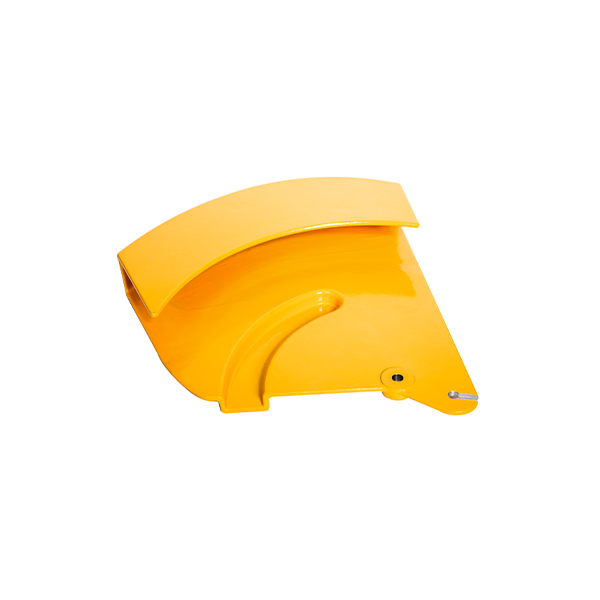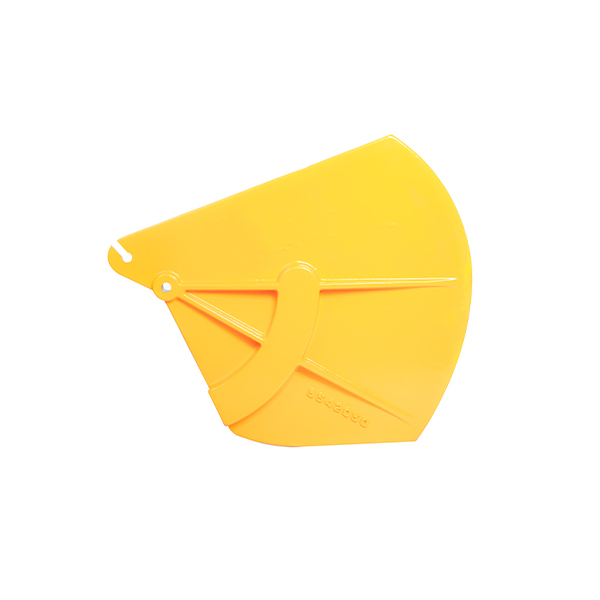Mobile:+86-311-808-126-83
Email:info@ydcastings.com
Precision Metal Castings | Durable Industrial Solutions
Metal castings are at the heart of durable engineering components across petrochemical, metallurgy, water supply, and a multitude of industrial sectors. With advancements in aluminium metal casting, aluminum casting die design, and green sand metal casting technology, cast products like the Equipment Protective Cover set new benchmarks for precision, longevity, and corrosion resistance.
This in-depth analysis covers the latest industry trends, detailed manufacturing flows, material and process insights, technical parameters, and real-world application cases. Enhanced by third-party standard references, parameter visualization, and best-in-class comparisons, this guide aims to elevate your understanding of modern metal castings solutions.

1. Metal Castings: Industry Overview & Market Trends
The metal castings industry exceeded US$130 billion in global market size in 2023, according to the World Foundry Organization (WFO). Major demand drivers include rapid industrial automation, stricter energy saving requirements, and the push for sustainable, recyclable materials. Aluminum die casting and stainless steel casting, in particular, are surging due to lightweight, anti-corrosion needs in automotive, oil & gas, and power transmission.
| Material Type | Process Variant | Main Applications | Max Part Size (kg) | Corrosion Resistance | Typical Dimensional Tolerance |
|---|---|---|---|---|---|
| Aluminium Metal Casting | High-pressure Die Casting | Automotive covers, electronics, marine housing | 70 | Excellent (for Al-Si alloys) | ±0.1 mm/100 mm |
| Green Sand Metal Casting | Sand Molding | Valves, pump bodies, equipment bases | 2000 | Varies by alloy | ±1.5 mm/100 mm |
| Stainless Steel Casting | Investment Casting | Protective covers, impellers, chemical processing components | 120 | Superior (for 316L, 304) | ±0.4 mm/100 mm |
| Aluminum Die Casting | Precision Die | Sensor housings, instrument enclosures | 50 | High (with surface coating) | ±0.12 mm/100 mm |
- Rise of lightweight alloys (notably Al-Si and Al-Mg series) for energy-efficient machinery components.
- Adoption of automation, robotic pouring, and AI-driven process control in foundries for higher precision and yield.
- Eco-friendly foundry systems: widespread use of green sand metal casting for resource recycling and emission control (KPMG Metal Industry Report, 2023).
- Focus on compliance with ISO/TS 16949 (automotive), ANSI/AWS C2.18/C2.19 (welding/casting repair), and environmental certifications.
2. Manufacturing Process: Metal Castings Flow Chart & Technical Explanation
(Al, SS, Alloy)
Green Sand / Die
1350–1550°C
CO2, Water Quench
Shot Blast
ISO, ANSI compliant
- Raw Materials: Only certified foundry-grade Aluminum (A356, ADC12), Stainless Steel (304, 316L), or carbon steels are sourced. Mill certificates available on request.
- Molding & Core: Green sand casting (high flexibility, low cost), or precision aluminum die casting (tight tolerances for large batches).
- Melting & Pouring: Fully automated induction or resistance furnaces for alloy consistency and safety, controlled by real-time sensors ensuring alloy composition within ±0.2%.
- Secondary Processes: CNC finish machining for apertures, mounting surfaces, and critical fit areas.
- Inspection: 100% NDT (magnetic particle, X-ray as per ASTM E1444/E94), mechanical testing (tensile, hardness, impact as per ISO 6892, ISO 6508), and surface finish as per ISO 1302.
Equipment Protective Cover: Product & Technical Specifications
The Equipment Protective Cover is a centerpiece solution, utilizing robust metal castings manufactured via a blend of aluminum die casting and stainless steel investment casting processes. It’s designed to shield critical assets in harsh working environments from dust, impact, and corrosive agents.
| Parameter | Aluminum Alloy Cover | Stainless Steel Cover |
|---|---|---|
| Standard Material | ADC12 / A356.2 | 304 / 316L |
| Applicable Process | High-Pressure Die Casting | Investment Casting |
| Dimensional Tolerance | ±0.1 mm | ±0.4 mm |
| Corrosion Resistance | Passes 500h Neutral Salt Spray (ISO 9227) | Passes 1000h Neutral Salt Spray |
| Hardness | ~90 HB | 190–210 HV |
| Mounting Methods | Screw, Bolt, Flange | Screw, Flange, Custom Slot |
| Lifespan (Tested) | >23 years (industrial) | >32 years (chemical plant) |
| Surface Finishing | Powder Coating / Anodized | Pickled / Passivated |
| Certifications | ISO 9001, CE | ISO 9001, ISO 45001, CE |
3. Advantages: Why Modern Metal Castings Stand Out
- Precision Tolerances: Modern aluminum casting die and CNC post-processing offer geometric tolerances up to ±0.1 mm, critical for sealing surfaces and modular assembly.
- Superior Surface Integrity: Stainless steel casting with passivation achieves roughness Ra ≤ 1.6μm, minimizing particulate build-up and ensuring easy cleaning in petrochemical process lines.
- Outstanding Corrosion Protection: Combination of anodizing and passivation enables resistance to salt fog, acids, alkalis, and industrial exhaust—validated by salt spray tests (ISO 9227/NSS, up to 1000 hours).
- Sustainability: Over 93% aluminum casting feedstock is recycled, making metal castings a preferred choice for green manufacturing targets.
- Versatile Customization: Easily adapted for bespoke geometries, mounting patterns, and branding, supporting OEM/ODM requirements for global equipment manufacturers.
4. Supplier Comparison: Mainstream Metal Castings Platforms
| Vendor | Material Specialization | Certifications | Geographical Markets | Minimum Order | Avg. Lead Time |
|---|---|---|---|---|---|
| YDCastings (recommended) | Aluminum / Stainless Steel / Iron | ISO 9001, CE, SGS, RoHS | Global | 1 pc (sample) | 14-25 days |
| Precise Cast Foundry | Stainless Steel / Brass | ISO 14001, ISO 45001 | North America, EU | 100 pcs | 32-45 days |
| ALUCast Ltd. | Aluminum only | ISO/TS16949, SGS | EU, South Asia | 15 pcs | 18-30 days |
| Green Mould Tech | Carbon Steel, Sand Casting | CE, ISO 9001 | Middle East, Russia | 30 pcs | 24-38 days |
5. Customized Metal Castings Solutions: Design to Delivery
- Consultation: Detailed needs assessment and application evaluation, including on-site survey if required.
- Multivariate CAD Modeling: 3D drawing review; FEA stress and flow simulation for critical applications.
- Rapid Prototyping: Pilot production using selected casting process (aluminum die casting, investment casting, or green sand metal casting).
- Testing (ISO/ANSI): Validation of corrosion, fatigue, and mechanical properties by independent QA labs.
- Batch Manufacturing: Full-scale, traceable production with serial coding and digital records.
- Packing & Logistics: Comprehensive protection, compliant with export-grade standards.
- After-Sales Support: Installation guidance (remote or on-site); 3-year product warranty standard.
Distribution
6. Typical Application Scenarios & Performance Case Study
-
Case: National Oil & Gas Pipeline Operator
Over 1100 equipment protective covers installed across three pipeline stations. Result: External hardware maintenance intervals extended by 42%, with zero corrosion failures after 28 months (based on NACE TM0169/G31 monitoring). -
Metallurgical Automation Cell
Aluminum casting die chassis utilize powder-coated covers. Improved cooling and resistance to dust abrasion led to a 17% increase in sensor uptime (field feedback, 2023). -
Municipal Waterworks Facility
Green sand cast stainless steel covers on active valve chambers. Maintains seal integrity after 3100 pressure cycles (tested to ISO 6207) under 6.3MPa.

FAQ & Technical FAQ
7. Delivery, Warranty & Client Support
- Typical Delivery: 2–4 weeks depending on design and batch size. Express airfreight available for urgent requirements.
- Warranty: Minimum 3-year warranty for all protective covers. Extended warranty/maintenance support available via contract.
- Support: 7/24 online engineering assistance; remote or on-site training for mounting and routine inspection.
- Traceability: Each shipment is annotated with full digital documentation, batch certificates, and compliance data for ISO, CE, and customer audits.
- OEM/ODM Service: Custom design, logo laser marking, specialized mounting, or anti-tamper features.
– Materials Today: Proceedings, 2024; Foundry-Planet.com Forum, April 2024.











